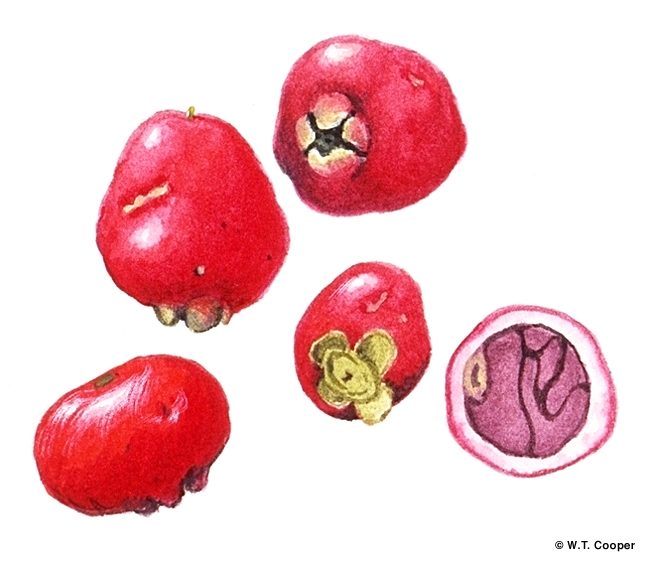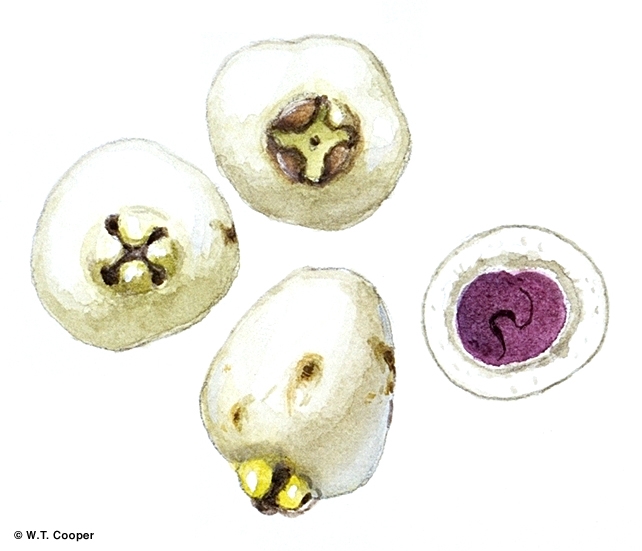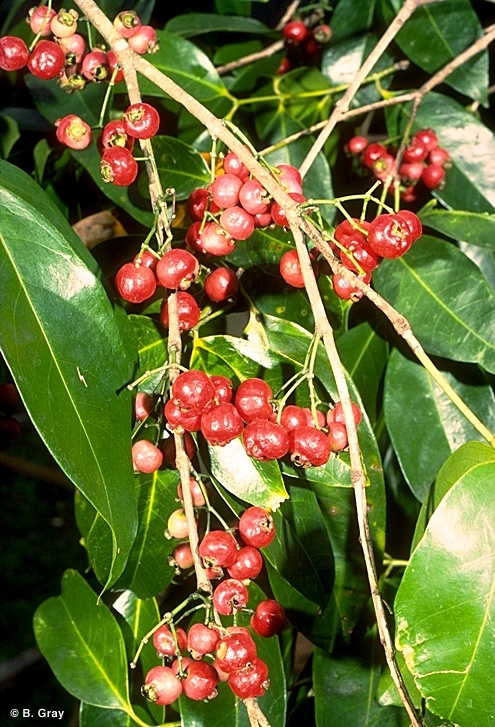Australian Tropical Rainforest Plants - Online edition
Syzygium tierneyanum (F.Muell.) T.G.Hartley & L.M.Perry








Hartley, T.G. & Perry, L.M. (1973) Journal of the Arnold Arboretum 54: 200.
River Cherry; Bamaga Satinash; Creek Satinash; Satinash, Bamaga; Satinash, Creek; Water cherry; Watergum; Cherry, River
Generally a poorly formed tree.
Oil dots rather small but quite numerous, brownish when viewed with a lens. Leaf blades about 8.9-18.6 x 3-6.9 cm. Intramarginal vein often somewhat obscure, sometimes two intramarginal veins present.
Inflorescence borne on the twigs below or back from the leaves, never terminal, bracts deciduous, absent at anthesis. Calyx tube (hypanthium) + pedicel about 5-10 mm long, calyx tube (hypanthium) about 4-6 mm diam., calyx lobes hemispherical, dimorphic, inner lobes larger, about 3-3.5 mm long. Petals +/- orbicular, concave, about 5-9 mm diam., oil dots numerous, about 180-200 or more per petal. Outer staminal filaments about 8-20 mm long, sparsely glandular, anthers about 0.8-1.1 x 0.7-0.9 mm, one gland terminal, near the back of the anther while additional smaller glands are sometimes visible lower down on the anther. Ovules about 15-25 per locule, placentas central, ovules radiating, ascending. Style about 10-20 mm long, approximating the stamens.
Fruits globular, attaining about 20 mm diam., slightly excavated at the apex, calyx lobes persistent, about 3 mm long. Seed solitary, about 5-8 mm diam., testa closely adhering to the rugose surface of the cotyledons and slightly adhering to the succulent pericarp, cotyledons green or purplish when fresh, uniformly textured except for the peripheral layer, conspicuously petiolate, stipules present. Radicle lateral or basal.
Occurs in CYP and NEQ. Altitudinal range from sea level to 450 m. Usually grows in rain forest or gallery forest along creeks and watercourses. Often grows as a rheophyte. Also occurs in New Guinea and the Solomon Islands.
Fallen fruit eaten by Cassowaries. Cooper & Cooper (1994).
A large spreading tree becoming popular as shade tree in parkland.
This species occasionally produces millable logs and the sawn timber is marketed as Bamaga Satinash. Wood specific gravity 0.69-0.74. The fruits are edible bit of no commercial value. Hyland (1983).





